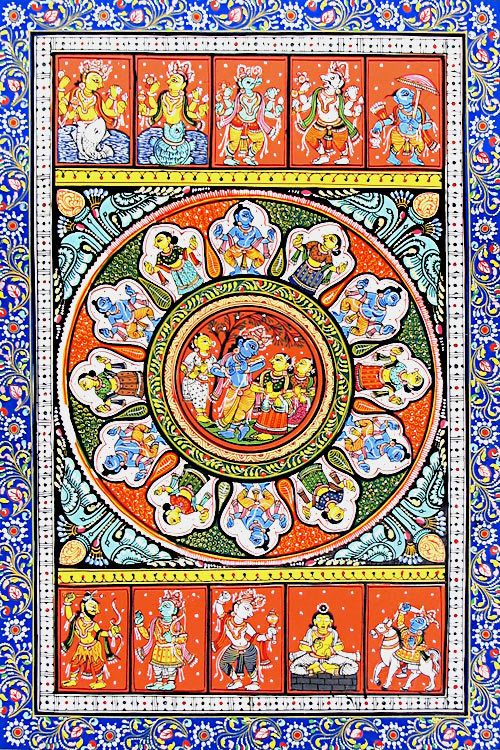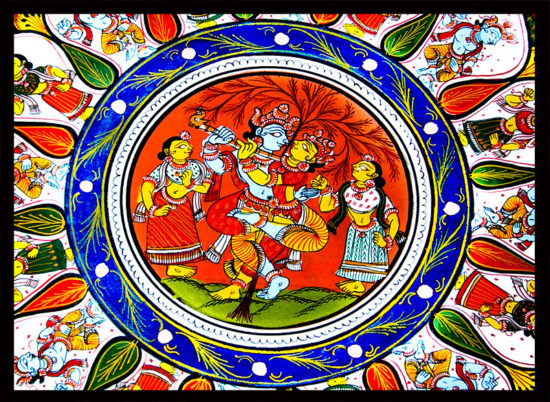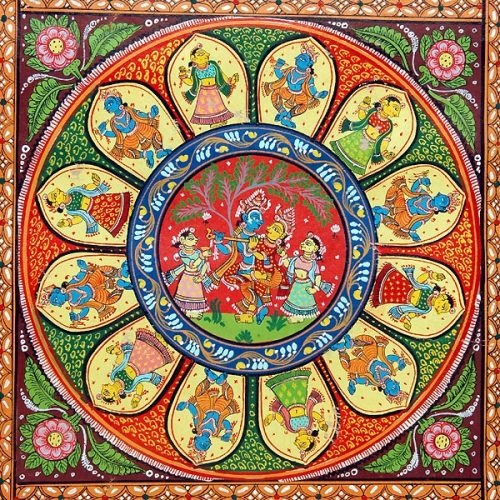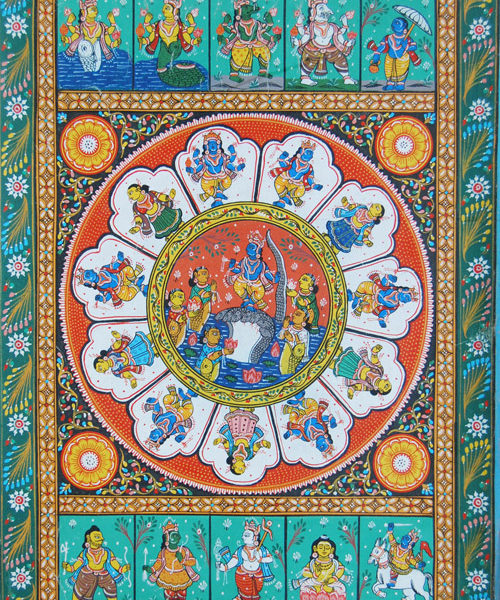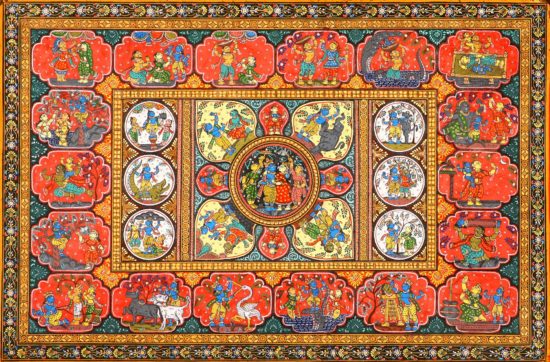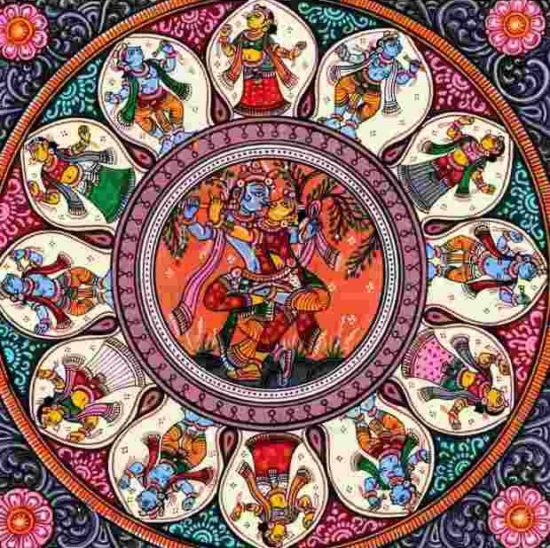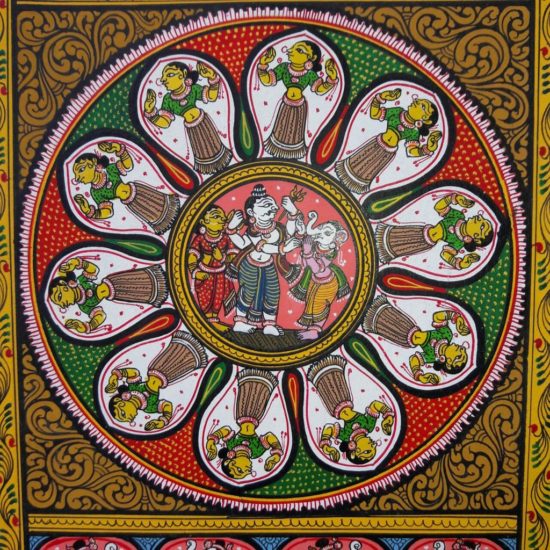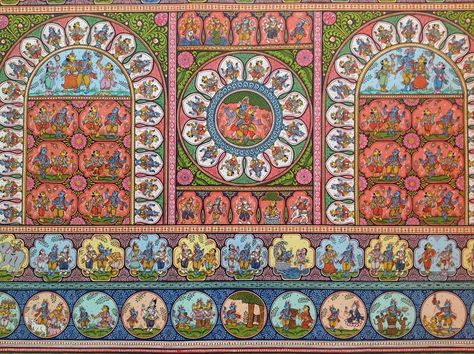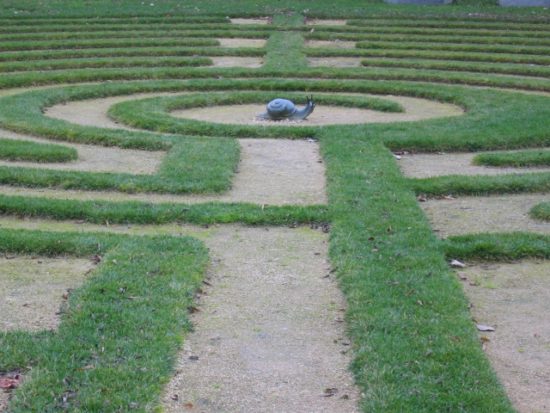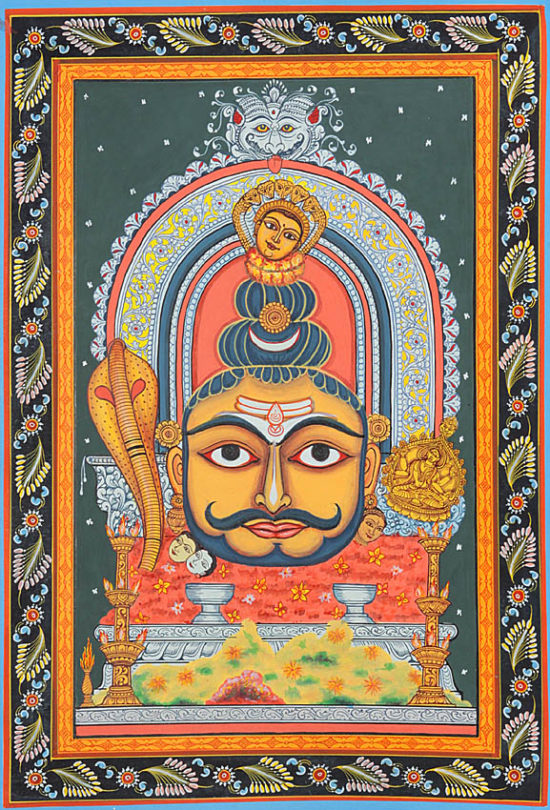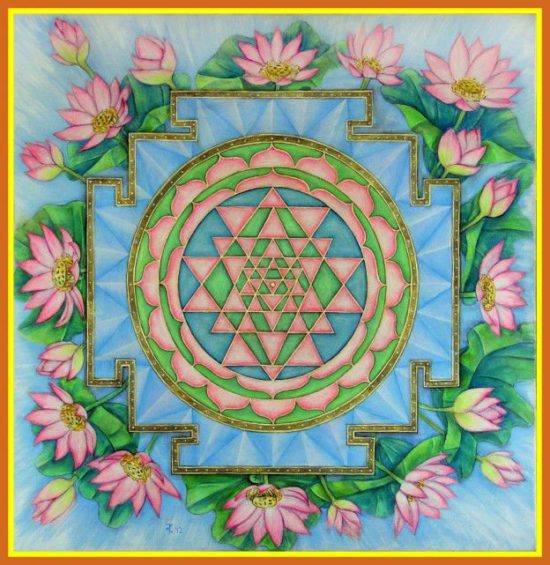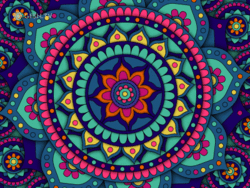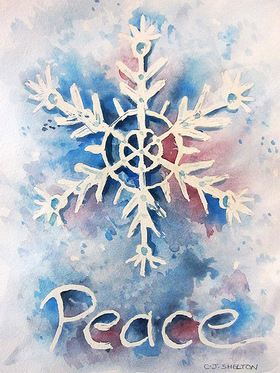Mandala Meditations
Traditional Orissa Mandala Art
This is a small gallery of mandala art painted in the traditional Orissa style. If you are interested, you can read more about it here: About The Orissa Art Tradition. Enjoy!
On Walking A Labyrinth
There are two basic principles:
- On the labyrinth, everything is metaphor.
- There is no right or wrong way to walk the labyrinth.
Walking the labyrinth is quite personal. There are many different reactions to a labyrinth walk—joy, contemplation, revelation, sadness, elation, etc. Be unselfconscious and give yourself permission to let your reaction be expressed as it chooses—crying, laughing, dancing, singing. There should be absolutely no judgement or embarrassment associated with a labyrinth experience. Don’t be surprised by your reaction. Remember, there is no right or wrong way to walk the labyrinth. Trust Spirit.
With the labyrinth, everything is metaphor—sound, waiting, thoughts, smells, body feelings, witnessing others, etc. Let the experience be what it will be.
The labyrinth is a two-way path. The walk is interactive. Do what feel natural. Follow your own pace. If you lose your way, that’s OK. Think of it as metaphor. It is OK to pass and to be passed. You may want to stop, especially at the switch-back turns. When on the labyrinth, it is important to be considerate. In the center you may want to visit each of the pedals, you may sit or lie down, and can stay for as long as you wish. There is no right or wrong way to walk the labyrinth.
A labyrinth walk is often considered a three fold path. Walking the labyrinth is a time of release, quieting, emptying, shedding (Purgation). Standing in the center is a time of awakening, receiving, opening (Illumination). And the journey out is a time of return, integrating, strengthening (Union). It is the metaphoric path home. Again, on the labyrinth everything is metaphor.
Take your shoes off unless you need them for support or medical reasons. You may want to approach the labyrinth with a centering thought or a question. You can ring a bell, wave a scarf, listen to music, or do what ever during your walk. It is common to make a ritual bow before beginning. When finished, it is again common to acknowledge the labyrinth.
Processing your experience is mostly personal. Keeping silence for a time is one way to do this. Be with your experience, your feelings (especially how you feel in your body), and your thoughts. It may be hard to express your reaction or experience in words so process things internally and symbolically. If you can, you may want to draw or write in a journal.
Chanting The Maha Mrityunjaya Mantra
It is said that chanting of Maha Mrityunjaya Mantra(Shiva Mantra) generates divine vibrations that ward off all the negative and evil forces and creates a powerful protective shield protecting the one who chants against accidents and misfortunes of every kind. Recitation of the mantra creates vibration that pulsates through every cell, every molecule of human body and tears away the veil of ignorance.
This mantra ignites a fire within that consumes all negativity and purifies entire system. It is also said to have a strong healing power and can cure diseases declared incurable even by the doctors. Many believe Maha Mrityunjay Mantra to be a mantra that can conquer death and connect human beings to their own inner divinity.
The Maha Mrityunjaya Mantra:
Om Tryamlakam Yajamahe
Sugandhim Pusti – vardhanam
Urva – rukamiva Bandhanan
Mrtyor – muksheeya Ma – amritat
Meaning:
Om. We worship The Three-Eyed Lord Shiva who is fragrant and who increasingly nourishes the devotees. Worshipping him may we be liberated from death for the sake of immortality just as the ripe cucumber easily separates itself from the binding stalk.
Explanation:
The mantra is a prayer to Lord Shiva who is addressed as Sankara and Trayambaka. Sankara is sana (blessings) and Kara (the Giver). Trayambaka is the three eyed one (where the third eye signifies the giver of knowledge, which destroys ignorance and releases us from the cycle of death and rebirth).
~Desktop wallpaper by Shirley Gibson
Sri Yantra Mandala Meditation
The secret key to using Yantras in meditation is Resonance. The process of Resonance is established by mental focus on the image of the Yantra. As long as the mind is tuned into the specific mood associated to that Yantra, the energy flows, but when the Resonance is stopped, the energy disappears.
Instructions for Shri Yantra Mandala meditation:
- Hang the Shri Yantra mandala on a wall facing North or East, placing the center of the Yantra at the level of your eyes.
- Adopt your favorite posture or, if you want, sit on a chair maintaining a straight spine.
- Breathe in through the nose and out through the mouth, but do not force at all, just let the breath flow normally.
- Look into the center of the Yantra, trying to blink as rarely as possible; you don’t want to look at the particular details of the Yantra, just keep your sight right in the center and observe the whole Yantra at once.
This exercise should last at least 15-30 minutes every day; the experience will be indescribable.
After at least seven days of Shri Yantra Mandala meditation you will be able to tap into the same yantric energy even without a Yantra (at the beginning you may fix your sight on an exterior or imaginary point or evoke the Yantra with your eyes closed)
When executing this technique it is recommended that we maintain a state of aspiration and intense longing for experiencing the beatific energies of the consciousness.
In superior phases the shri Yantra Mandala absorbs the practitioner’s complete attention, and he can no longer tell if the Yantra is within himself or if he is within the Yantra; this is the state of nonduality.
The yantra image in this post can be enlarged (click on it) copied, and printed, and then used for this meditation.
Credits and Links:
- Lotus Mandala by Sasha Tovstik found here
